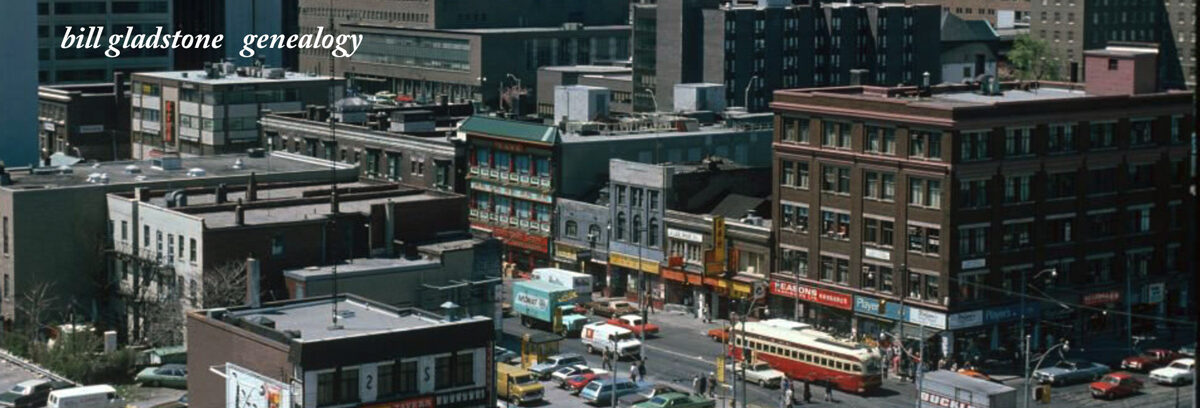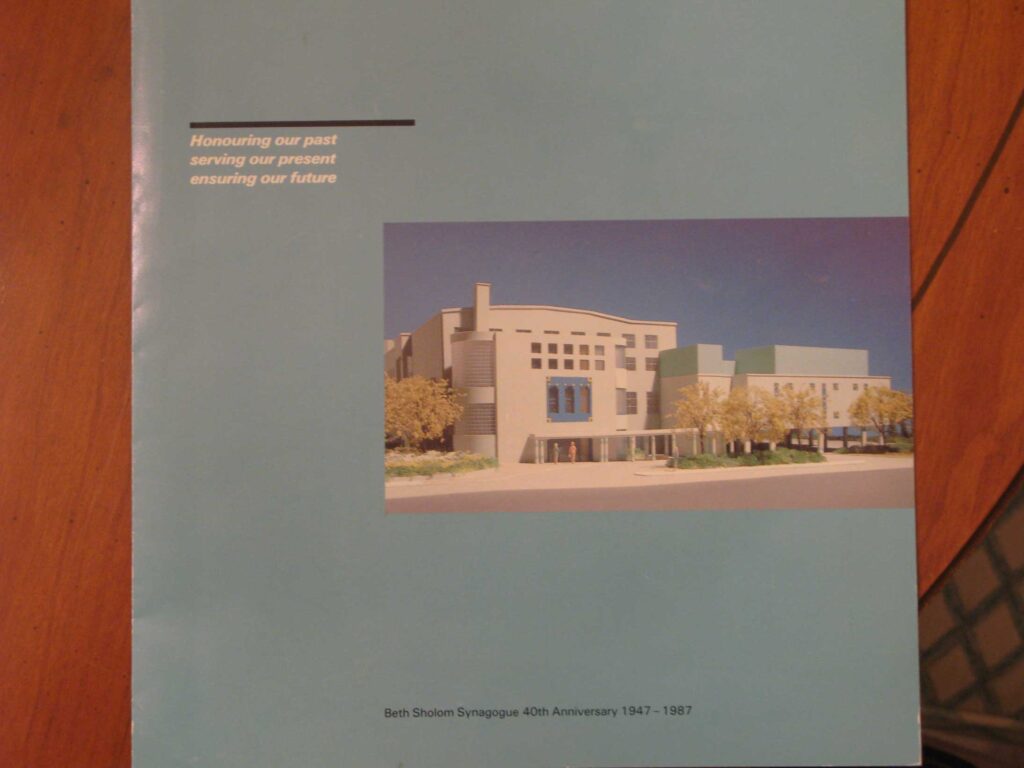From the Beth Sholom Bulletin, 2013
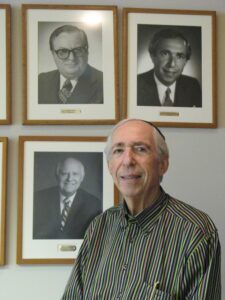 Morton Brown is sitting in the Beth Sholom board room beneath two long rows of photographic portraits of former presidents of the shul. Having first joined the board in 1970, Morton attended board meetings regularly and served on various committees, as treasurer, second vice president, board chairman and president from 1978 to 1980.
Morton Brown is sitting in the Beth Sholom board room beneath two long rows of photographic portraits of former presidents of the shul. Having first joined the board in 1970, Morton attended board meetings regularly and served on various committees, as treasurer, second vice president, board chairman and president from 1978 to 1980.
A surgeon originally from the Maritimes, Morton was born and raised in Fredericton, New Brunswick, the elder of two brothers in a family with close ties to the synagogue. “My father was the treasurer of the synagogue for many years and my mother was active in the Sisterhood and was the regional chair of Hadassah for New Brunswick. They encouraged us to attend Sabbath services every week,” he recalls.
As a result he and his brother “became familiar with Sabbath services and we learned to appreciate cantorial music. We were in the choir and the synagogue became part of our family life.”
Morton’s wife, the former Marlene Newman, grew up in Halifax, Nova Scotia. When they were first married, they lived in Halifax, where their children, Mitchell and Lisa, were born. He graduated from Dalhousie Medical School in Halifax and then moved his family to Boston where he did his residency in general surgery at Tufts and urology at Boston University.
When the family came to Toronto in 1968, moving into the Marlee-Roselawn neighbourhood, they immediately joined Beth Sholom and enrolled their kids in the afternoon program at the Mildred Arnoff Memorial Hebrew School.
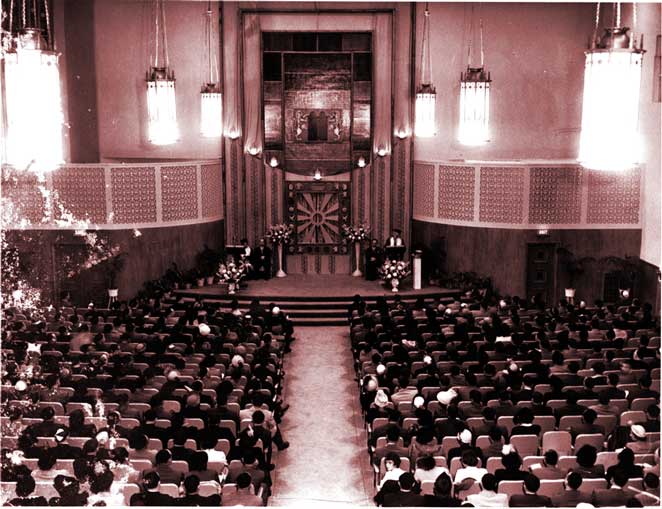
The sanctuary as it appeared in the 1950s
After only a year or two Morton was invited onto the board, where he worked closely with many of the shul’s founding fathers, including Rabbi Dr. David Monson. They were the shul’s “first generation” and he regards himself as being part of the second generation. Today he sees the children of the original “baalabatim” taking an active role in shul affairs as the metaphorical baton is passed to the third generation.
Prior to the shul’s extensive renovations in the late 1980s, the board conducted a viability study to decide whether the congregation should uproot itself and move away. “Rabbi Monson had suggested that we should sell the property and move north of Steeles, because many families had moved to that area. The Rabbi had tremendous insight to be thinking that way back in 1985.”
The viability study included a demographic survey of the area bounded by Dufferin and Bathurst, Wilson and St. Clair. It determined, however, that a sizeable Jewish population still remained in the area and that young couples were moving back to the area in order to be closer to their parents and the offices downtown.
That gave a green light to the renovation of the existing building and the western extension, providing the shul with a new foyer, banquet hall, grand staircase and front entrance now oriented along Atlas Avenue instead of Eglinton. Years earlier the congregation had purchased the lot to the west and dismantled the gasoline station that had been there.
As building chairman for the renovation, Morton worked with a committee that included the late Moe Emer, Sid Cooper, Jerry Goldenberg, Irving Ungerman and the late Mel Grossman.
He remembers with great pride working with the crafts people who designed the synagogue’s western doors, on which animals were crafted representing the story of Noah and the Ark, and the upper foyer, where renowned artist Aba Bayefsky hand-painted a Hebrew Psalm around the perimeter.
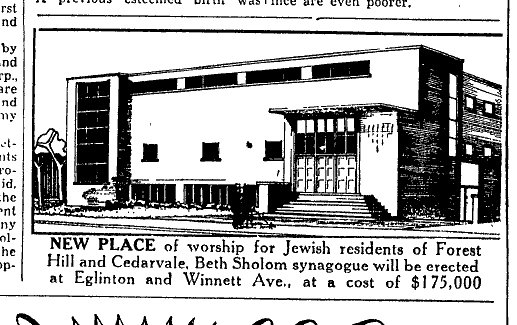 The shul had raised only one-third of the funds for the $5.7-million renovation when the real-estate crash of the late 1980s brought fund-raising to a halt. “We had to borrow money,” Morton says, “and in that regard people on the board, and especially Jerry Goldenberg and Irv Ungerman, were instrumental in our eventual success. Irving arranged a loan of four million dollars from the Bank of Montreal on almost no interest whatsoever.” To assist the fund-raising, four properties owned by the shul were sold, the Brotherhood held regular fund-raising events over a period of years, and the Sisterhood made a sizeable donation. The bank loan was repaid within ten years.
The shul had raised only one-third of the funds for the $5.7-million renovation when the real-estate crash of the late 1980s brought fund-raising to a halt. “We had to borrow money,” Morton says, “and in that regard people on the board, and especially Jerry Goldenberg and Irv Ungerman, were instrumental in our eventual success. Irving arranged a loan of four million dollars from the Bank of Montreal on almost no interest whatsoever.” To assist the fund-raising, four properties owned by the shul were sold, the Brotherhood held regular fund-raising events over a period of years, and the Sisterhood made a sizeable donation. The bank loan was repaid within ten years.
Morton expresses delight that Beth Sholom has kept up its tradition of having excellent clergy. He sings lofty praise for both Rabbi Aaron Flanzreich and Cantor Eric Moses who together “fulfil so many needs of our congregants.
“Rabbi Flanzreich inspires us with his wonderful sermons and commentaries on the weekly Parshah, and Cantor Moses thrills us with his musical renditions of our rich Hebrew liturgy. We are so lucky to have them. They have sparked a whole renaissance for us and have drawn many new young families to our congregation.” ♦
